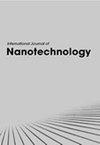基于SRCNN的糖尿病视网膜病变自动分级和多病变识别混合模型YOLOv3
IF 0.3
4区 材料科学
Q4 MATERIALS SCIENCE, MULTIDISCIPLINARY
引用次数: 0
摘要
糖尿病视网膜病变(DR)的自动分级和病变识别对研究人员来说非常重要,因为它是糖尿病的主要影响。糖尿病使眼底微小血管受损,视网膜内出现微动脉瘤、出血、硬渗出物、软渗出物等多种病变,引起多种视力相关并发症,如不及早检查和治疗,可导致全视力丧失。视网膜眼底图像是临床筛查和诊断DR的常用手段。然而,不同经验水平的操作人员拍摄的眼底图像在质量上存在很大差异。低分辨率的眼底图像增加了误诊的风险,使得临床观察更加困难。为了避免低分辨率眼底图像并能够仔细诊断DR,在我们提出的系统中开发了一种新的混合结构,以确保DR检测和分类过程比现有模型更加精确和快速。在图像预处理阶段,该模型采用超分辨率卷积神经网络来增强低质量眼底图像的像素密度。下一步,为了确定DR等级,使用了一种称为you - only - look - one - version 3的高级深度学习模型。最后,另一个you - only - look - once version 3网络阶段使用边界框来识别眼底图像中的多个病变。在开放访问的MESSIDOR数据集上对该系统进行了评估,结果表明,该系统在DR分级方面的总体准确率为96.89%,在病灶检测方面的总体准确率为97.6%,检测速度高达5.6 s。本文章由计算机程序翻译,如有差异,请以英文原文为准。
A novel hybrid model for automatic diabetic retinopathy grading and multi-lesion recognition method based on SRCNN & YOLOv3
Automatic grading and lesion identification of diabetic retinopathy (DR) is important for researchers because it is the leading effect of diabetes. Due to diabetes, the tiny blood vessels within the fundus are damaged and multiple lesions such as microaneurysms, hemorrhages, hard exudates, and soft exudates appear in the retina and cause multiple vision-related complications, which can drive to total vision loss without early examination and treatment. For clinical screening and diagnosis of DR, retinal fundus images are commonly used. Fundus images taken by operators with different levels of experience, however, have a broad variance in quality. Low-resolution images of the fundus raise the risk of misdiagnosis which makes it more difficult to observe clinically. In order to avoid low resolution fundus images and to be able to diagnose DR carefully, a new hybrid structure is developed in our proposed system to ensure that DR detection and classification processes become much more precise and faster compared with existing models. In the image pre-processing stage, the proposed model adopts a super-resolution convolutional-neural-network to enhance the pixel density of low-quality fundus images. In the next step, to identify the DR grade, an advanced deep-learning model called You-Only-Look-Once-Version 3 is used. Finally, another You-Only-Look-Once-Version 3 network stage is applied using a bounding box to recognise the multiple lesions in the fundus images. The proposed system is evaluated on an openly accessible MESSIDOR dataset, and the results show that the system achieves 96.89% overall accuracy for DR grading and 97.6% accuracy for lesion detection with a high detection speed of 5.6 s.
求助全文
通过发布文献求助,成功后即可免费获取论文全文。
去求助
来源期刊

International Journal of Nanotechnology
工程技术-材料科学:综合
CiteScore
0.60
自引率
20.00%
发文量
45
审稿时长
6-12 weeks
期刊介绍:
IJNT offers a multidisciplinary source of information in all subjects and topics related to Nanotechnology, with fundamental, technological, as well as societal and educational perspectives. Special issues are regularly devoted to research and development of nanotechnology in individual countries and on specific topics.
 求助内容:
求助内容: 应助结果提醒方式:
应助结果提醒方式:


